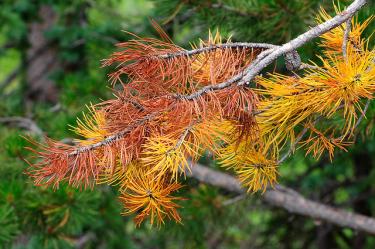Monitor your Woods for Outbreaks
Keep an eye out for changes in your woods. A spot of yellow or brown, or some thinning needles, might be the effects of natural shading on lower limbs—or it might be a disease or insect that is about to spread to other trees.
Stay informed about threats in your area. If traps are available for problematic insects in your area, use these to find out how common the insects are.
Monitor for pests and signs of disease every month or two during the growing season. Take a walk in the woods and check trees on the trunk, limbs, twigs, under peeling bark, and leaves—the most likely places to find injuries. You don’t have to check every single tree. Keep your eye open for things that look out of the ordinary.
Call your local Cooperative Extension office or another expert if you see something suspicious.
Pay attention to the normal insects around you. Most aren’t harmful and many even help by eating pests. Just as different plants bloom at different times, different insects have their seasons. If you notice when certain moths appear in the spring, or when the first butterflies of a particular type appear in the garden, it could help you keep track of the normal shifts in insect life through the year.
Find Out More
How can I get more tips?
It’s simple! Enter your email below.

